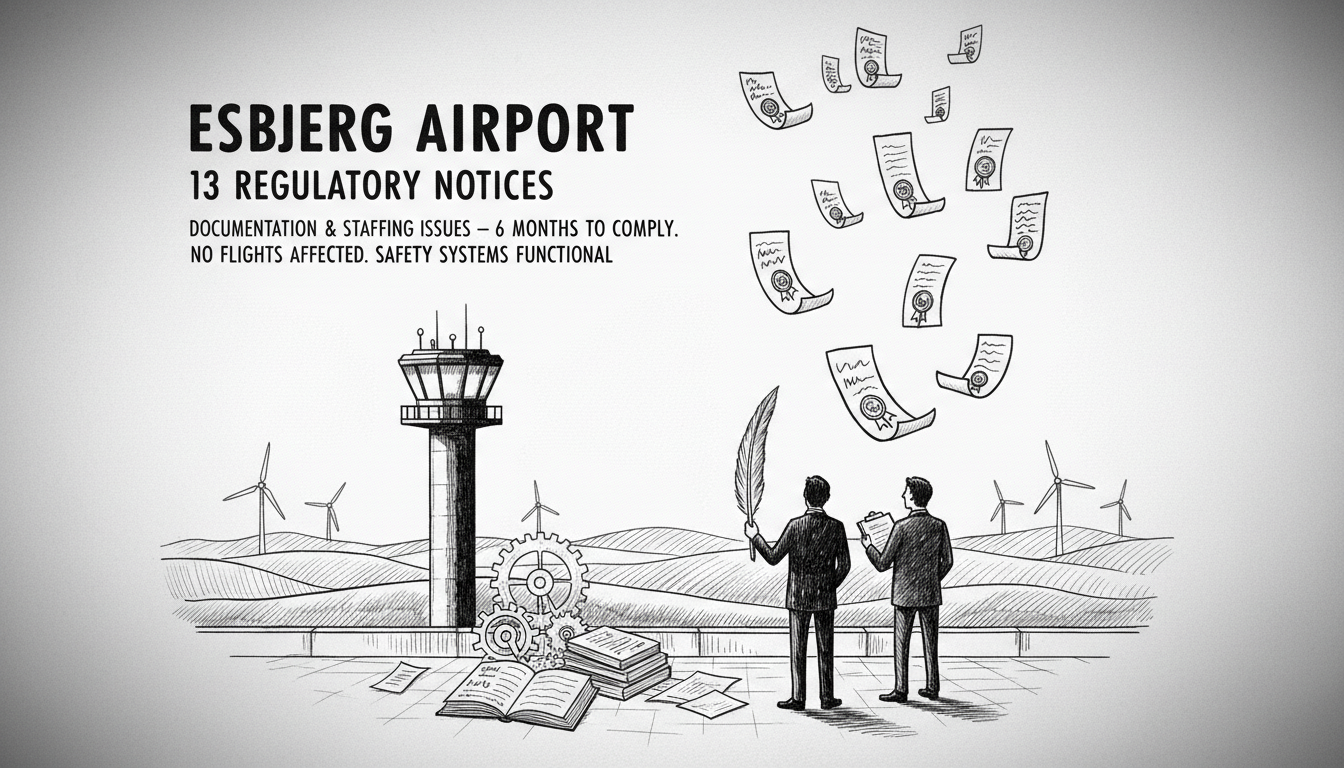Esbjerg Airport faces administrative challenges following a recent regulatory inspection. The Danish Transport Authority issued thirteen formal notices to the regional airport. All violations relate to paperwork and staffing rather than flight safety concerns.
Airport director Susanne Kruse Sørensen addressed the findings directly. She confirmed the issues do not threaten passenger safety directly. The airport has already begun corrective measures, she stated.
The inspection revealed insufficient documentation of safety procedures. It also identified inadequate staffing for security management tasks. All thirteen notices received level two or three classifications, indicating moderate severity.
Authorities granted Esbjerg Airport six months to resolve all identified issues. The airport responded by creating a new security manager position. This hire will strengthen internal safety oversight systems.
Denmark maintains strict aviation safety standards through regular inspections. Regional airports like Esbjerg face particular challenges balancing resources with regulatory requirements. This situation reflects common tensions between administrative compliance and operational realities.
International travelers might wonder how this affects their travel plans. The airport confirms no flight operations face disruption. All safety-critical systems remain fully functional and compliant.
This case demonstrates how regulatory systems catch issues before they become safety threats. The proactive identification of administrative shortcomings prevents potential future problems. Airports worldwide face similar documentation and staffing challenges.
The Danish aviation sector maintains strong safety records overall. This inspection outcome shows the system working as intended. Catching procedural issues early maintains high safety standards across Nordic air travel.
What does this mean for Esbjerg's operations? The airport continues normal service while addressing paperwork gaps. Travelers can expect unchanged security screening and flight operations. The administrative improvements will happen behind the scenes.
Regional airports serve vital connectivity roles across Scandinavia. Maintaining their operational standards ensures remote communities retain air access. Esbjerg's response shows commitment to meeting national safety requirements while serving western Denmark's transportation needs.

